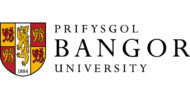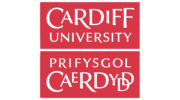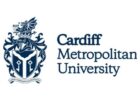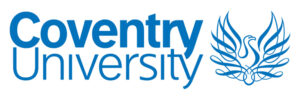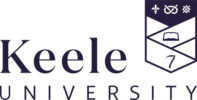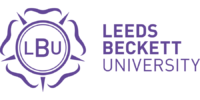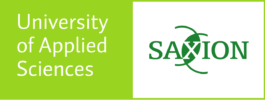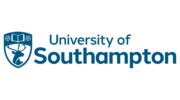
- Log in:
- Sustainability
- Investing

Support your Business and Management teaching with our Sustainability Strategy simulation.
SustainabilitySim enables students to apply Business and Management concepts in a world-of-work context.
Working for a professional services consultancy, their challenge is to develop Sustainability strategies for clients in the agri-food and technology sectors.
In this virtual working environment, students take on the roles of ESG Analyst, Strategy Lead, Client Manager and Communications Strategist.
The team works through four phases – Opportunity, Mobilisation, Solution Building and Business Development – using a range of sustainability tools and management techniques.
See how we’ve mapped the content to the curriculum and SDGs and find out how we can help you
plan and deliver a session.
The resource’s innovative pedagogy combines case study and simulation-based learning and supports authentic assessment.
Business and Management applications
Corporate Sustainability and ESG
Understand a company’s environmental, social and governance responsibilities. Meet the challenge of compliance with international standards and regulations, e.g. ISO 14001, 14044 and 14064, CSRD, EMAS and GRI 13.
Strategy and Organisational Change
Formulate and implement ESG strategies that involve and benefit all stakeholders: customers, investors, suppliers and employees.
Corporate Social Responsibility and Business Ethics
Put socially responsible business practices and ethical decision-making at the centre of corporate ESG strategies.
Communication and Reputation
Devise a communications strategy to support a new ESG solution. Critically evaluate a company’s reputation and develop a PR strategy that protects and enhances its brand.
Supply Chains and the Circular Economy
Develop strategies to improve supply chain sustainability through lower Scope 3 emissions and enhanced traceability and transparency. Use Life Cycle Assessments to increase resource-use efficiency and reduce waste.
Tasks & Challenges
01 Sustainability tools
Work with Scope 1-3 emissions calculators, Life Cycle Assessments and Double Materiality Assessments.
02 Management techniques
Use SWOTs, RACI charts, budgets and forecasts to quantify and assess a client’s ESG challenges.
03 Client and stakeholder communication
Create an ESG solution presentation and communications strategy. Deliver a video pitch to a prospective client.
04 Resource allocation
Deploy different workstreams – People, Data, Technology and Operations – to support effective project management, deliver cost savings and add value.
05 Business development
Seek out and convert new client opportunities using acquired ESG knowledge.

- Commercial awareness: understanding the context in which organisations operate, such as the internal and external challenges they face.
- Organisation: the ability to be systematic and efficient; planning your time and your workload effectively; meeting deadlines.
- Professionalism: a commitment to delivering work outcomes on time and to the required standard.
- Communication: adapting the way that you communicate with others; constructing working relationships with colleagues and clients.
- Leadership: taking control of a situation by inspiring and energising others to carry out tasks and achieve goals; displaying a clear sense of direction and values.
- Negotiation: being able to bring about agreement on a course of action through discussion, to achieve mutually beneficial results.
- Teamwork: working collaboratively with others to achieve a goal; sharing responsibility and contributing ideas.
- Innovation: identifying new opportunities, generating solutions, making improvements; thinking creatively in order to produce an effective outcome.
- Initiative: the ability to spot opportunities to make a difference with the courage to take action without being prompted by others.
- Problem-solving: drawing on several other skill areas – including analysis, flexibility and research – to deconstruct a problem, think laterally and develop informed solutions.
- Decision-making: reviewing a problem or situation; understanding potential alternatives and their implications; making a choice and accepting the consequences.
- Adaptability: the ability to change plans, priorities and ideas to suit changing circumstances; understanding the balance between task urgency and importance.
- Resilience: being able to ‘bounce back’ after a setback or disappointment; to keep on trying at a problem until you reach a suitable outcome.
- Systems: recognise and understand relationships; analyse complex systems; deal with uncertainty.
- Future: understand and evaluate multiple outcomes; assess the consequences of actions; deal with risks and changes.
- Critical: reflect on one’s own values, perceptions and actions; take a position in the sustainable development discourse.
- Strategic: develop and implement innovative actions that further sustainable development.
- Collaborative: learn from others, including peers; facilitate collaborative and participatory problem-solving.
- Problem-solving: apply different problem-solving frameworks to complex sustainable development problems; develop viable, inclusive and equitable solutions.
Our clients
FAQs
The resource covers many of the apprenticeships' Duties and KSB requirements.
Corporate Responsibility & Sustainability Practitioner (Level 4)
D2: Identify and build internal relationships in order to foster buy-in to existing and future CR&S initiatives with the aim of integrating ethical policies and behaviour into everyday business practices.
D4: Communications to promote CR&S best practice.
D5: Working with colleagues to devise and develop business’ CR&S strategy.
D6: CR&S mandatory reporting requirements.
D9: Identify relevant social and environmental risks to the business and escalate internal and external stakeholders accordingly.
D9: Recognise risks to own organisation’s corporate reputation.
D13: The Sustainable Development Goals.
Sustainability Business Specialist (Level 7)
D1 Embed a management system approach to sustainability performance improvement.
D2 Collaborate in the setting of sustainability key performance indicators.
D3 Develop a comprehensive auditing programme.
D4 Manage environmental data and monitor the performance of suppliers.
D7 Communicate with colleagues on sustainability best practice.
D10 Advise the organisation on reduction of harmful emissions.
D14 Investigate water, energy and materials reduction initiatives.
D15 Lead, manage and deliver sustainable business projects, such as carbon foot printing and impact assessments.
D17 Collaborate on the corporate social responsibility agenda.
D19 Develop a business case to clearly demonstrate return on investment.
By enabling students to apply their knowledge and skills in a practical context, SustainabilitySim supports authentic assessment.
The authenticity comes from reproducing a real-world working environment, immersing the learner in a situation that pushes them to use skills and abilities necessary to complete the assigned tasks.
Authentic assessment evaluates students' learning in projects and tasks that simulate real-world scenarios. It measures critical thinking, problem solving and communication skills. In other words, what students can do with their knowledge, not just what they know.
In SustainabiltySim, just as on a work placement, knowledge and skills are tested in set-piece assignments (e.g. the presentation to the client) and performance appraised at the end of a project (e.g. the reflective piece) as well as in the simulation itself.
The resource is self-supporting. Students can work through the simulation independently and at their own pace, with no lecturer intervention.
We recommend that certain key tasks are assessed: primarily, the ESG Strategy pitch to the client, the accompanying presentation and a reflective piece of writing (c. 500 words) once they have completed the simulation. There is also the option for selective tasks to be self- or peer-assessed.
To help motivate students, award module credits for the completion of the simulation.
All the completed tasks / submissions can be accessed and downloaded by the lecturer or student.
Full curriculum mapping and answer guidance is provided to support the assessment process.
Generative AI presents challenges to students, lecturers and assessors. How do we prepare students for working life and educate them in the responsible use of AI? How can they be assessed in a way that accurately reflects their own knowledge and intellectual ability and upholds academic integrity?
One solution is to return to written tests in examination rooms. Another is to use authentic assessment, testing not only what the students knows but also how that knowledge is applied.
In the simulation students are tasked with critically evaluating an AI-generated ESG Strategy, comparing it to the one developed for the client by the consulting team. This is in response to the client’s request to justify the uniqueness of their expertise and the value of their services.
The exercise enables students to recognise the value and limitations of AI. It also reminds them of the reality that awaits them in business, especially in consulting, where clients may question the value of AI-generated advice and expertise.
In SustainabilitySim, using simulated content not recognised by AI can help ensure that the students are producing their own ideas and analysis. Other approaches and measures are needed too, e.g., open questions, answers that require students to draw on personal experience, and regular in-simulation submissions of work for ongoing assessment.
The resource helps prepare students for the world of work and the use of artificial intelligence whilst reminding them that one form of AI is paramount: Academic Integrity.
It is designed to support the Green Skills agenda and the increasing demand from students for employability experiences related to roles in the Green Economy. Find out more.
Recent analysis by the CBI shows that the UK’s Green sector is growing at triple the rate of the UK economy.
According to EURES, the demand for Sustainability skills is increasing across most sectors as Europe’s green economy expands.
The resource has been designed to help universities train and educate Sustainability-smart, futures literate graduates.
Both the Knowledge and Skills requirements of the CMDA course are supported: Organisational Performance, Interpersonal Excellence, Personal Effectiveness and Professional Behaviours. Find out more
